Slight deviations from true flatness can cause light falling nearly parallel to the surface – for example, glancing light or side lighting – to cast shadows that are irregular in shape and distribution which cause the wall to look uneven and badly finished.
The best way to explain glancing light is with images. The images below all show the effects of glancing light on flat surfaces.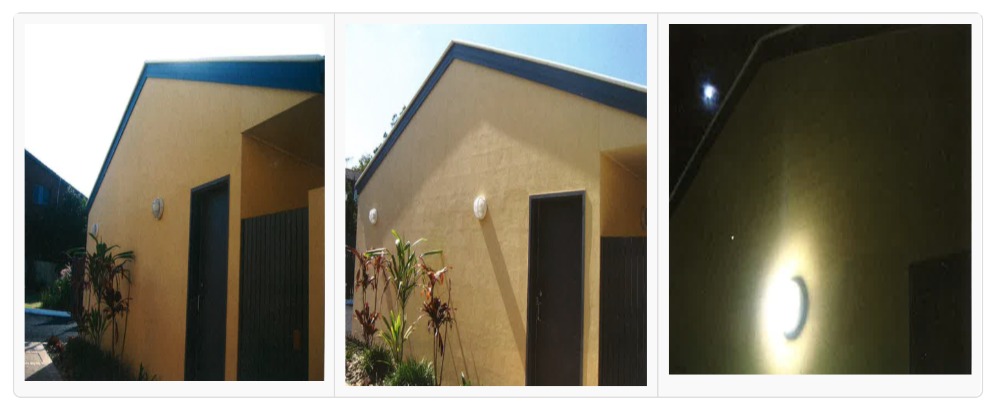
Image: Image on the left shows the rendered wall under diffuse light, second image shows glancing sunlight and third image shows the effects of a wall mounted light.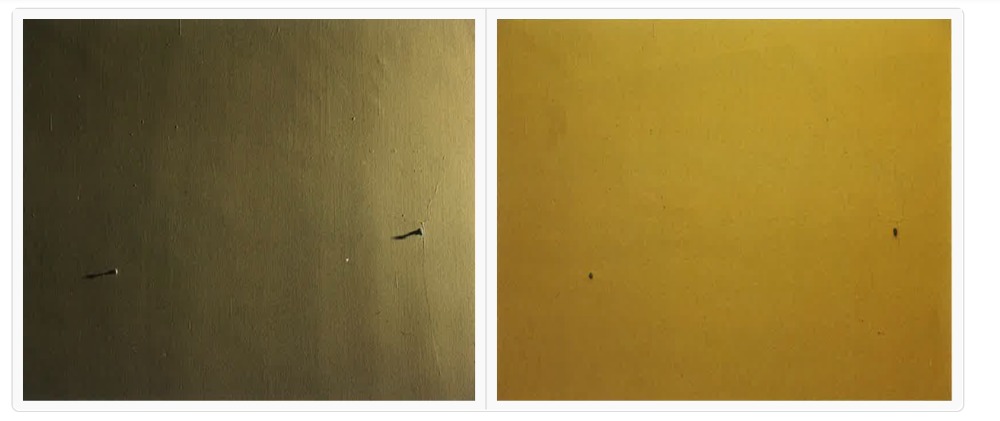
Image: Image on the left shows an area of hard-set plaster under standard lighting conditions. The same area of hard set plaster is shown on the right under glancing light.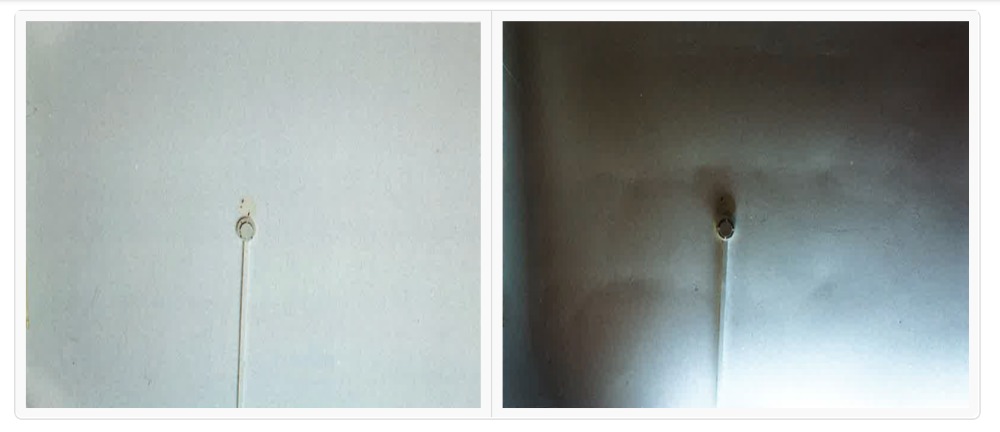
Image: Image on the left shows an area of fibrous plaster as it appears by diffuse light. The image on the right shows the same area under glancing light.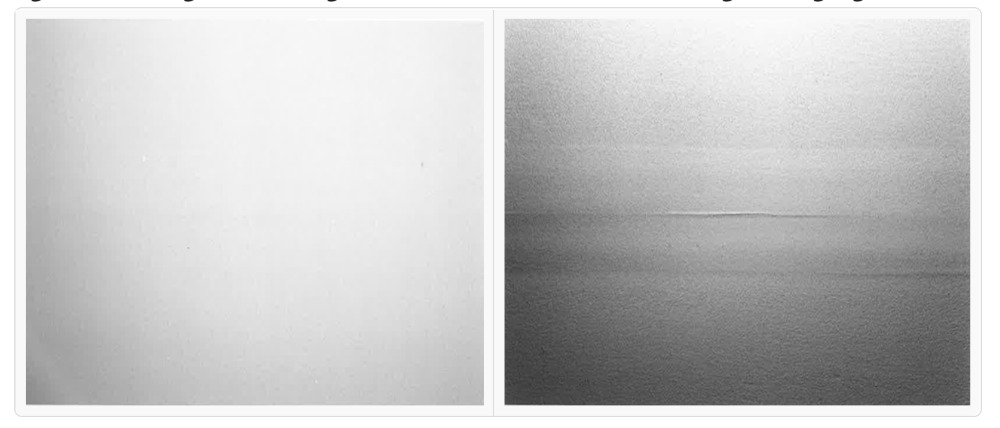
Image: Left image shows plasterboard wall under normal lighting, then shown on the right under sidelight.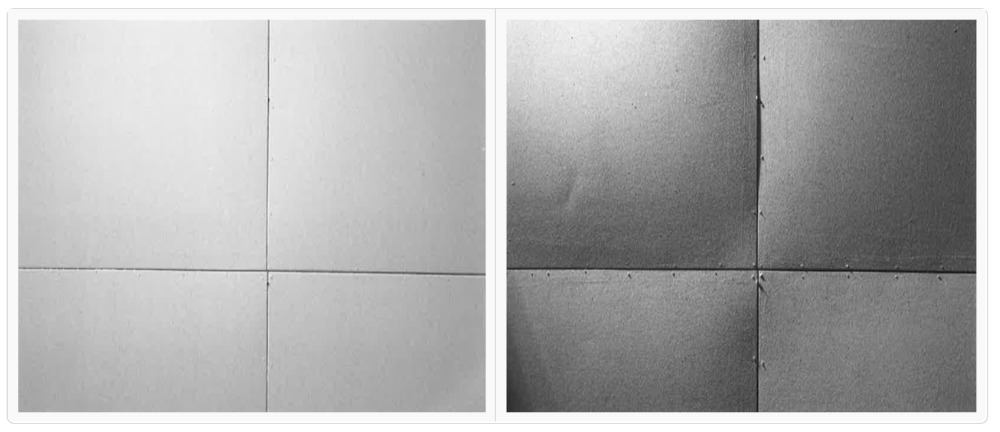
Image: Cement sheeting containing a V joint as it appears by diffuse light on the left then under glancing light on the right.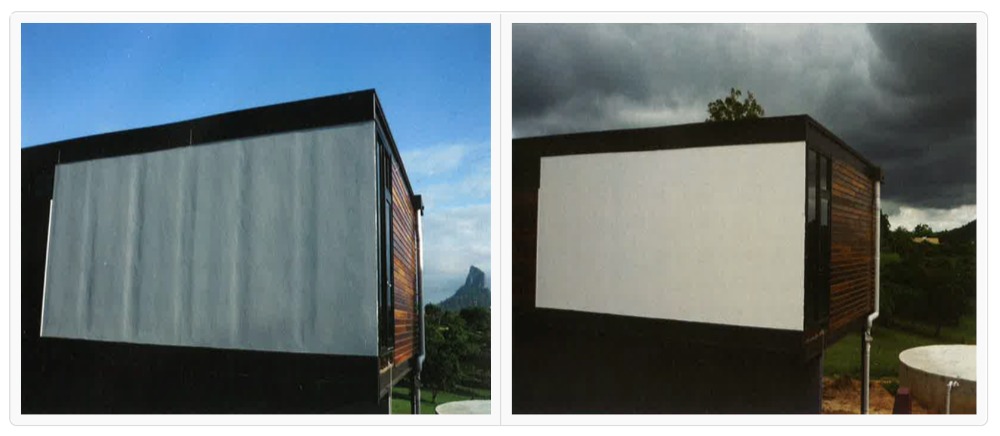
Image: Left side image shows cement sheets with the joints taped and set with an applied finish under sidelight. On the right hand side it shows the same wall under standard light.
Avoiding the effects of glancing light
While it is not possible to create a wall that is flat in the literal sense of the word, it is possible to minimise the effects of glancing light by being smart with your lighting.
The worst effects are produced when a single unshaded lamp is placed close to a wall or ceiling in an otherwise darkened room or area. In this case, putting the light about 45cm below the ceiling will ensure a much better distribution of light and help make the irregularities in the surface much less noticeable. An alternative to suspending lamps below the level of the ceiling is also to put them above it, in recesses.
Some quick tips to avoid glancing light:
- Put lights above or below ceiling height instead of AT ceiling height
- Use suitable curtains and pelmets to distract from ceiling height windows
- Use natural lighting where possible
- Use light coloured matte paint where possible or a fine textured finish – this will diffuse and reflect both natural and artificial light
- On external cladding a screeded cement render is the preferred option to minimise glancing light
- Do not use gloss paint on walls that will be observed from a wide angle
- Using soffits and window eaves helps with exterior glancing light
The following diagrams are taken from Bob Cameron’s book – Illumination & Decoration of Flat Surfaces. 
Improved lighting design with the light fittings either recessed into the ceiling or suspended below with reflectors direct the light into the room rather than across the ceiling.
Align plasterboard joints parallel with wall lighting rather than across the light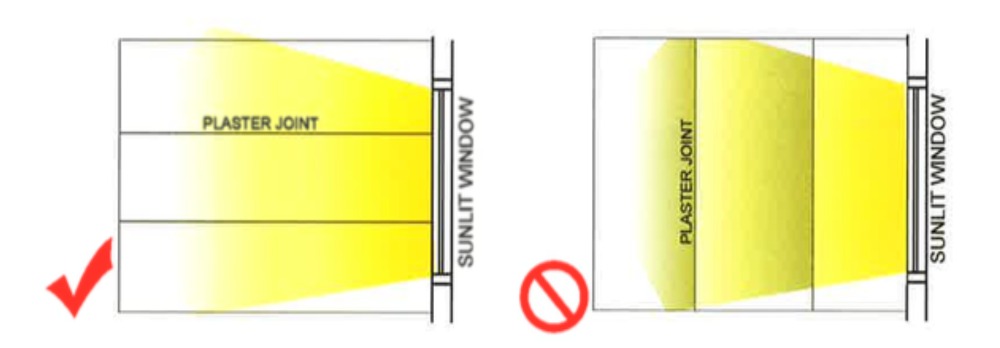
Align plasterboard joints parallel with light coming from a window rather than across the light